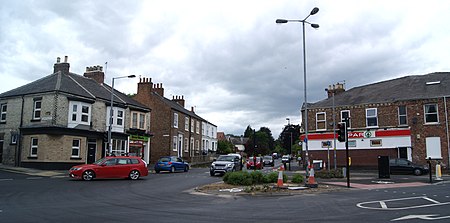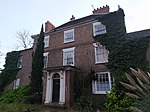Holgate, York

Holgate is a suburb of York in England. It is located about 1 mile west of Micklegate Bar in the city walls. Holgate is also the name of an electoral ward in the City of York unitary authority. The ward is currently bounded by the River Ouse from Scarborough Bridge to Ouse Acres on its northern boundary. Carr Lane and Ouse Acres on one side, and the intersection of York Road and Acomb Road on the other, make up its western boundary. The remainder of the southern boundary follows Moorgate and Holgate Beck to the East Coast Main Line railway which completes the eastern boundary as far as the River Ouse/Scarborough Bridge.The ward contains the National Railway Museum and many historic buildings, including a restored 18th century windmill and a Cold War bunker. It is the site of the former York Carriage Works which closed in 1996. Thrall Car Manufacturing Company, briefly re-opened the works. After that closed in 2002 Network Rail continue to use it as a maintenance depot.
Excerpt from the Wikipedia article Holgate, York (License: CC BY-SA 3.0, Authors, Images).Holgate, York
Chelwood Walk, York Holgate
Geographical coordinates (GPS) Address Nearby Places Show on map
Geographical coordinates (GPS)
| Latitude | Longitude |
|---|---|
| N 53.957777777778 ° | E -1.1113888888889 ° |
Address
Chelwood Walk
Chelwood Walk
YO26 4UH York, Holgate
England, United Kingdom
Open on Google Maps










